Ripley Entertainment Inc.'s Blog, page 481
June 9, 2016
First Recorded Use of OMG Was Earlier Than You Think
Featured in Ripley's Believe It or Not!

The first use of the abbreviation OMG was found in a 1917 letter to Winston Churchill.
The letter was written by Lord John “Jacky” Fisher
He was an admiral and naval innovator in WWI
He resigned in 1915 after a falling out with Churchill
It’s thought that he had become acclimated to writing in code, and that’s why he used OMG
The abbreviation is even followed by an explanation of what it means, sort of like he was texting his clueless dad

MINI BION
“BIONs” – short for Believe It or Not – is the word we use at Ripley’s to refer to anything that is unbelievable and worthy to become part of Ripley’s lore and collection.
Source: First Recorded Use of OMG Was Earlier Than You Think
CARTOON 06-09-2016
June 8, 2016
The Sailor’s Tattoo Code
Featured in Ripley's Believe It or Not!
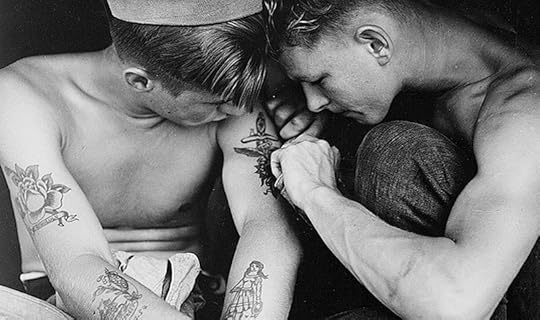
Sailors are renown for two things: their tattoos and their strict adherence to superstition, but did you know the two are often one part of the other?
Inked sailors date back thousands of years in ancient China, and it’s believed that Captain Cook’s voyage to the Pacific Islands popularized the practice with western sailors.
Once they became popular, complex systems of meanings and associated superstitions developed within sailor culture, and today the sailor’s tattoo has become popular with tattooed landlubbers as well.
Tattoo Symbology
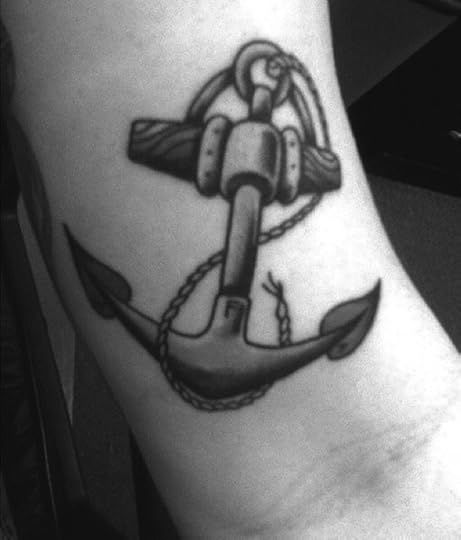
CC retrospects via Flickr
Anchor: Anchors were symbols of stability to sailors and were often accompanied by “Mom” or “Dad”, authority figures likened with a seaman’s stability. Anchors also could mean that a sailor had crossed the Atlantic and returned safely. Eventually, merchant marines would adopt the anchor as a de facto badge of membership.
Crossed anchors: A pair of anchors crossed on the webbing of the hand—between the thumb and index finger—meant you were a boatswain’s mate. A boatswain was the foreperson on deck, in charge of managing the crew on duty and directing any rigging, anchoring, or cabling of the ship.
Crossed cannons: A pair of crossed cannons designated military service among sailors. Though you might think of an old naval warship equipped with just cannons, many early navies also used sharpshooters on deck and in rigging to fire at enemy ships’ decks. In some cases, crossed guns could mean a sailor was such an appointed sniper instead of a cannoneer.
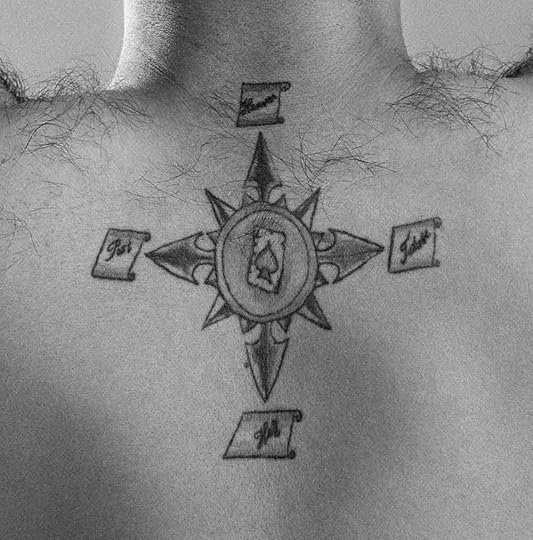
Compass Rose: Not all tattoos were supposed to mark service or accomplishments; some tattoos were meant to act as talismans of protection for the sailor and ship carrying them. A compass rose may not have actually worked as a compass but was supposed to help keep sailors from getting lost, and remind them of the way home.
Star: A star, much like a compass rose, was a safeguard against being lost at sea, but instead was meant to protect a sailor lost overboard or otherwise stranded at sea.

Harpoon: Harpoons were a direct reference to whaling and as such were symbols of time aboard a fishing boat or service in a fishing fleet. Though the harpoon was simply a tool of the trade, many eventually came to associate it as a symbol of protection against vengeful whales and sea monsters.
Embed from Getty Images
Fully rigged ship: A fully rigged ship was evidence that a sailor had crossed the dangerous waters of Cape Horn, also known as Tierra del Fuego—Land of Fire. Occupying the southernmost tip of South America, Cape Horn was dreaded by many sailors; the rough waters required a ship to travel under full sail. Mutinies have even been recorded against captains ordering the navigation of these notorious waters.
Turtle: Turtles were well known by sailors for being stalwart travelers of the sea, and turtles were the mark of a sailor who had crossed the equator. The visage of King Neptune was also a symbol of this feat, and some sailors even got tattoos of both to mark their achievement.

Dragon: A Chinese dragon celebrated a sailor’s trip to the Orient, and a golden dragon meant they had crossed the International Date Line. Dragons have long marked the backs of sailors and pirates in the Asian Pacific. Asia was the birthplace of the original marriage between sailors and tattoos, but as time went on, many countries in the region began associating tattoos with pirates and brigands, eventually outlawing tattoos.
Hula Girl: The hula girl was made popular by tattooists like Sailor Jerry, who helped popularize tattoos among Navy soldiers during World War II. A hula girl meant a trip to Hawaii, and to many soldiers was a reminder of the attack on Pearl Harbor. In the early 1900s, the US Navy banned what it deemed as salacious tattoos, and some artists popped up with specialties in “adjusting” tattoos for modesty.

CC Tony Alter via Flickr
Rooster and pig: A rooster tattooed on one foot and a pig on the other was believed to keep a sailor safe from drowning. Chickens and pigs were thought to often survive shipwrecks and were sometimes found at sea. This most likely was due in part to them being boarded in wooden crates, but the belief persisted into World War II when many soldiers got this tattoo. They believed putting the tattoos on their feet would keep the ocean from pulling them down.
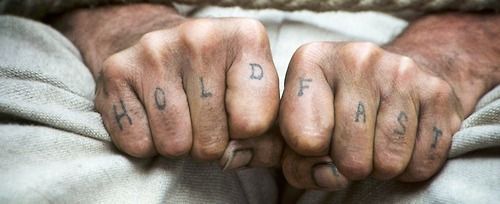
from “Master and Commander”
HOLD FAST: Hold fast written on your knuckles was meant to help you do just that—hold fast. A charm on the fingers to keep ropes from slipping through them; a seaman’s dexterity with rope was what earned his salt. A rope around the wrist or a knot on the forearm was also worn by deck hands and dock tenders.

Swallows: A sailor normally got a swallow when he first left home. The swallow was a symbol reminding the sailor of home and was believed to be a talisman that would carry the sailor’s soul to their home of they died at sea. After the first swallow, each additional swallow marked 5,000 nautical miles traveled at sea.
Dagger through a heart: A dagger through a heart was said to represent a lost comrade or many lost comrades. A sort of memento mori—the sailor would not only be reminded of their friend’s death, but of how treacherous the sea can be.
Other Superstitions
Tattoos, of course, aren’t the only symbolic practices in sailing culture. The golden hoop earrings synonymous with pirates and brigands were often thought to be a way to pay for a funeral if a sailor died, or even as a safeguard against drowning.
If those ideas seem to be counter to each other, the almost global diversity of sailors has made many superstitions that aren’t just different, but sometimes the exact opposite of each other.
Whistling, for example, was thought by some to be bad luck, thinking that the wind would see whistling as a direct challenge and summon mighty storms. Others, however, believed the wind liked whistling and would ensure a good wind. In either case, galley cooks were often encouraged to whistle—as a means to ensure they weren’t stealing food.
Source: The Sailor’s Tattoo Code
Children in Atule’er village Climb 2,600 Feet to get to School
Featured in Ripley's Believe It or Not!

If you have grandparents, you’ve heard the stories of their five-mile trek to school, uphill both ways, in the snow, and without shoes. The adage is meant to make you feel good about your own lot in life and remind you that no matter how bad you think you have it, someone has it worse.
No one understands that last part as well as the schoolchildren of Atule’er village in China’s Sichuan Province.
The 200-year-old village is located on top of a cliff 799 meters (2,624 feet) high. Being on the cliff isn’t a problem since the ground is fertile and many residents make a living growing fruits and vegetables. The problem is that the only school in the area is at the bottom of the mountain.
Brave School Children
The 15 school children, the youngest being six-years-old, in the village have to climb down the cliff face if they want an education.
The trek takes them about two hours and is so grueling and dangerous that they remain at school for two weeks after they arrive before heading back.
The climb is made with the aid of 17 vine ladders, making it all look like the world’s scariest tree house.
Parents take turns accompanying the children on their journey, but that doesn’t eliminate the risk. Tragically, eight residents have fallen to their deaths during the trip in the last two years.
The Future of Atule’er Village
This school journey isn’t the first of its kind. In 2012, news broke of children in Indonesia who had to cross a collapsed bridge over a flowing river to get to school.
Like those children, the students in Atule’er village can expect to have their commute made safer eventually, but there’s no saying how long that might take. The country doesn’t have the money to build a road to the school now, but Beijing has said they are dedicated to tackling the poverty issue faced by some of its more desperate areas.
In the meantime, we can only hope that these kids remain safe and applaud their dedication to education.
Source: Children in Atule’er village Climb 2,600 Feet to get to School
Cube Works in Toronto Makes Murals out of Rubik’s Cubes
Featured in Ripley's Believe It or Not!
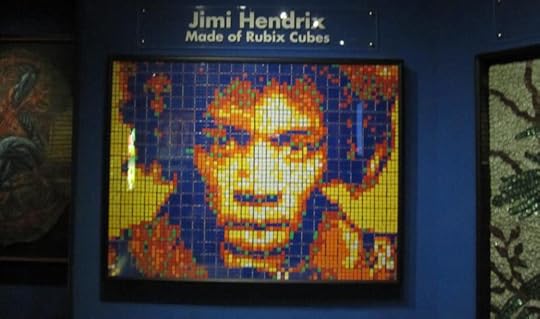
Collecting strange and unusual art is something we do here at Ripley’s. Whether it’s art made of unusual materials or created by an artist with an amazing story, it’s it somehow out of the ordinary, we’re all over it.
In the case of pieces made by Cube Works, our curiosity was two-fold. Not only is the artwork made of Rubik’s Cubes, someone has to solve those puzzles before their final placement!
Cube Works
A studio based in Toronto, Cube Works is a small collaborative of artists with special talents.
They’ve become renowned for their work with Rubik’s cubes and Rubik’s-style cubes, but they create art out of a lot of different materials. Some of their other work has been done using LEGOs, Crayons, and Dice just to name a few.
The studio is directed by Josh Chalom, who holds records for his Rubik’s Cube murals.
The only thing more impressive than the finished products is the work that goes into creating each piece.
The Process
Standard Rubik’s cubes only feature six colors: white, red, blue, yellow, orange, and green. So the first thing that has to be done is the image being recreated has to digitized and reduced to a pixelation those six colors.
This is built into a kind of blueprint—a grid that maps out the colors of the image and tells the artists what color Rubik’s cube goes in which spot.
From there, the team of cubers play with the puzzles to get them set up in the colors they need. The artists solving the cubes are all capable of finishing in 30 seconds or less and assemble between 700 to 1,000 cubes a day.
After the cubes have been matched to the blueprint, they are fastened to the panels.
The Finished Products

Madonna made of Rubik’s Cubes
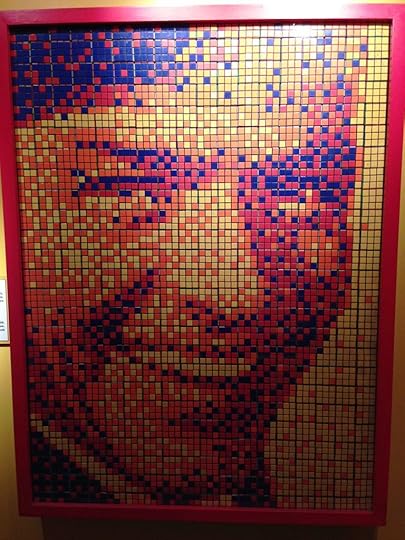
Frank Sinatra made of Rubik’s Cubes

Jimi Hendrix made of Rubik’s Cubes
In addition to their Rubik’s cube art, we also have some of their Crayon pieces.

Lady Gaga in Crayons
Not all of our Rubik’s cube art is from Cube Works.

The Joker made of Rubik’s Cubes by artist David Alvarez
Source: Cube Works in Toronto Makes Murals out of Rubik’s Cubes
An Update on Stein Hoff’s Epic Voyage
Featured in Ripley's Believe It or Not!
While he rows his way across the Atlantic Ocean, Stein Hoff has access to a satellite phone. By way of said phone, we recently received this message from our intrepid traveller:
A belated greeting from Fox II and I as we slowly meander our way across the North Atlantic propelled by oars and the whims if nature! 23 days since we started from Battery Park, 24 since the party at the Norwegian church where I was very proud and a little embarrassed to be such focus of attention! A special thank you for […] the T- shirts, which I use a lot, being long-sleeved, they work well as sun protection. With Ripley’s Believe It or Not support and heightened attention to my expedition, you have further increased my determination to see this expedition come to a successful end in Isles of Scilly! But I realize now that my estimate of 90 days was too optimistic. It will take longer, but I will get there! Best wishes from Stein Hoff
Check in soon as we’ll continue to update you on the status of Hoff’s journey!
The Future Is Now: A Robot to Fold Your Laundry
Featured in Ripley's Believe It or Not!

A company called FoldiMate has invented a machine to tackle one of the most hated chores: Folding Laundry!
Dubbed “Your Laundry Folding Friend,” the machine handles most of your folding needs
It easily folds items like shirts, pants, and towels, but it doesn’t fold small items like socks are larger items like bed sheets
You clip the item you want to be folded to the clips, tell the machine what it is, and then sit back while it does the rest
The machine even steams clothes to get out wrinkles and perfumes them
The entire process takes roughly 45 seconds
The FoldiMate robot will be available in 2018, but preorders are being taken now
MINI BION
“BIONs” – short for Believe It or Not – is the word we use at Ripley’s to refer to anything that is unbelievable and worthy to become part of Ripley’s lore and collection.
CARTOON 06-08-2016
June 7, 2016
The Amazing Story of Victoria Woodhull
Featured in Ripley's Believe It or Not!

When you think about women running for president, it’s normal to think of as a more contemporary occurrence. For starters, the history of women’s rights in the US is no secret. And beyond that, Hillary Clinton’s success is something that seems unprecedented before this moment in history. So you’d be forgiven for not knowing that Victoria Woodhull was the first woman to run for the highest office, and she did it in 1872.
As a stockbroker, a newspaper editor, and a women’s rights activist, Woodhull’s story is fascinating.
First Female Stockbroker
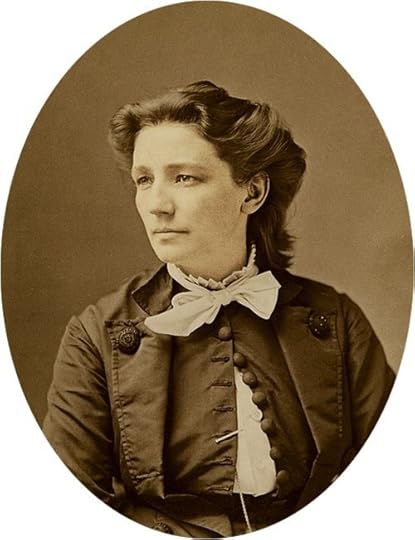
CC Harvard Art Museum
Woodhull came from humble beginnings. Her mother believed herself to be clairvoyant, and her father was a snake oil salesman, leaving the family destitute and often in trouble with the law.
It was actually due to her following in her mother’s mystic footsteps that led to one of Woodhull’s first financial successes.
She and her sister Tennessee met wealthy widower Cornelius Vanderbilt when they served as mediums to help him contact the spirit of his dead wife.
Vanderbilt was so impressed with their mystic skills that he kept them on and asked them to help him with financial advice from the spirits. The sisters performed the task so well that Vanderbilt backed them in starting the first woman-owned brokerage firm on Wall Street.
The brokerage was so successful that Victoria and her sister started printing a weekly journal in 1870 called Woodhull and Claflin’s Weekly.
On April 2, 1870, Woodhull announced her intentions to run for president by writing a letter to the New York Herald.
[…] believing as I do that the prejudices which still exist in the popular mind against women in public life will soon disappear, I now announce myself as candidate for the Presidency.
Controversy
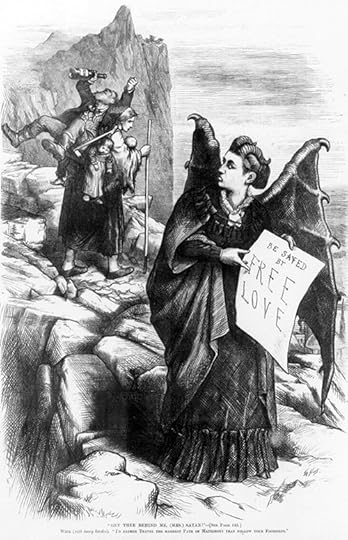
Caricature of Victoria Woodhull|CC Library of Congress
A woman running for president before women even had the right to vote would be controversial enough, but the difficulties of Woodhull’s run didn’t end there.
She was a suffragette, a proponent of free love, and a strong believer that men’s romantic indiscretions should not be swept under the rug and ignored.
It was this belief that landed her in so much trouble as the election rolled near.
Prominent Rev. Henry Ward Beecher, the brother to author Harriet Beecher Stowe, set himself up in opposition to Woodhull and spoke out against her free love principals. Using her weekly publication as a platform, Woodhull published a story about an extramarital affair that Rev. Beecher had with a parishioner.
She wasn’t looking to pass moral judgment on the reverend’s actions, but she did want to expose the double standard between men and women.
Upon reading the story, the public was not outraged about the preacher’s infidelity but chose to be upset about the fact that Woodhull had published the story.
She was arrested on charges of distributing indecent material through the mail, and she spent Election Day behind bars.
As if being arrested for telling the truth wasn’t punishment enough, the controversy inspired cartoonist Thomas Nast to draw this caricature of Woodhull as Mrs. Satan.
The image depicts a wife carrying her children and drunk husband and saying to Woodhull, “Get thee behind me, (Mrs.) Satan! I’d rather travel the hardest path of matrimony than follow your footsteps.”
The Difference between Woodhull and Clinton’s Run
It’s easy to say that Hillary is the first woman to run for president, but that’s just a simplification of the truth.
Victoria Woodhull ran as a representative of the Equal Rights Party. The party was newly formed at the time and probably too small to gain much political power in the American party system.
Conversely, Hillary’s success comes as a candidate for one of the two major parties in our Two-Party System. This gives her a much more realistic chance at winning the election.
But nothing detracts from the fact that Woodhull and other women made history by attempting to run for the highest office in the land long before Hillary hit the scene.
The Sandfish Skink is Aptly Named
Featured in Ripley's Believe It or Not!

The Sandfish Skink was so named because of the way it swims through sand like a fish does through water.
The sandfish is a lizard native to North Africa and Southwestern Asia
It hunts insects by sensing the vibrations they make while moving
It dives and swims through the sand as a way of regulating its temperature and to escape predators
Unlike other burrowing animals, the sandfish skink moves through the sand by undulating its body, not by using its limbs
MINI BION
“BIONs” – short for Believe It or Not – is the word we use at Ripley’s to refer to anything that is unbelievable and worthy to become part of Ripley’s lore and collection.
Ripley Entertainment Inc.'s Blog
- Ripley Entertainment Inc.'s profile
- 52 followers





